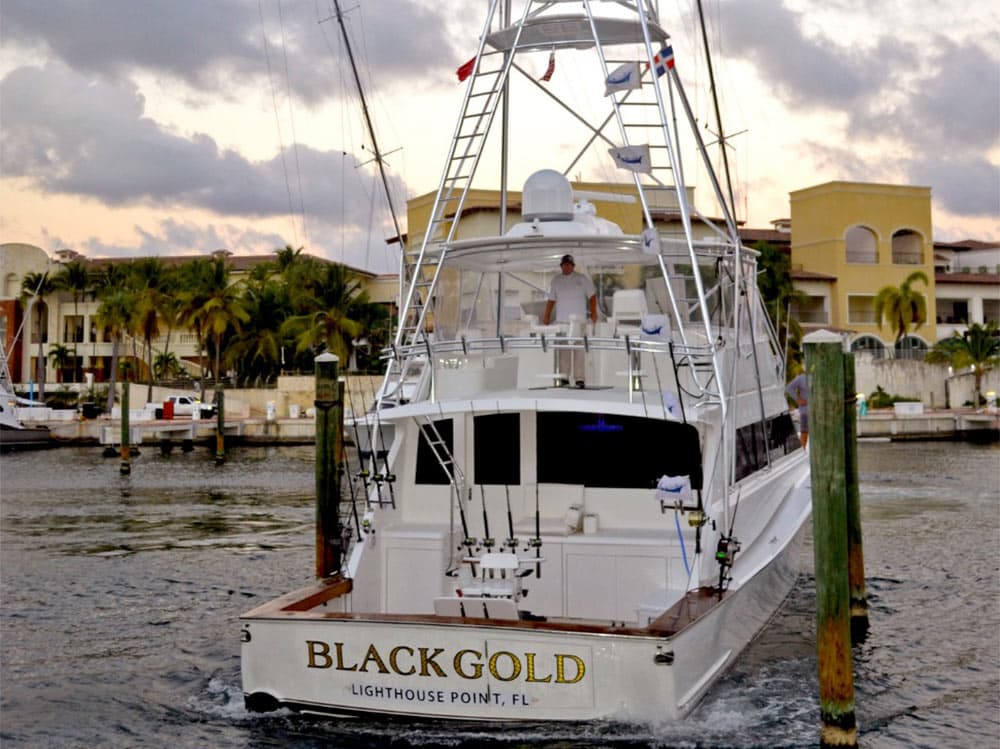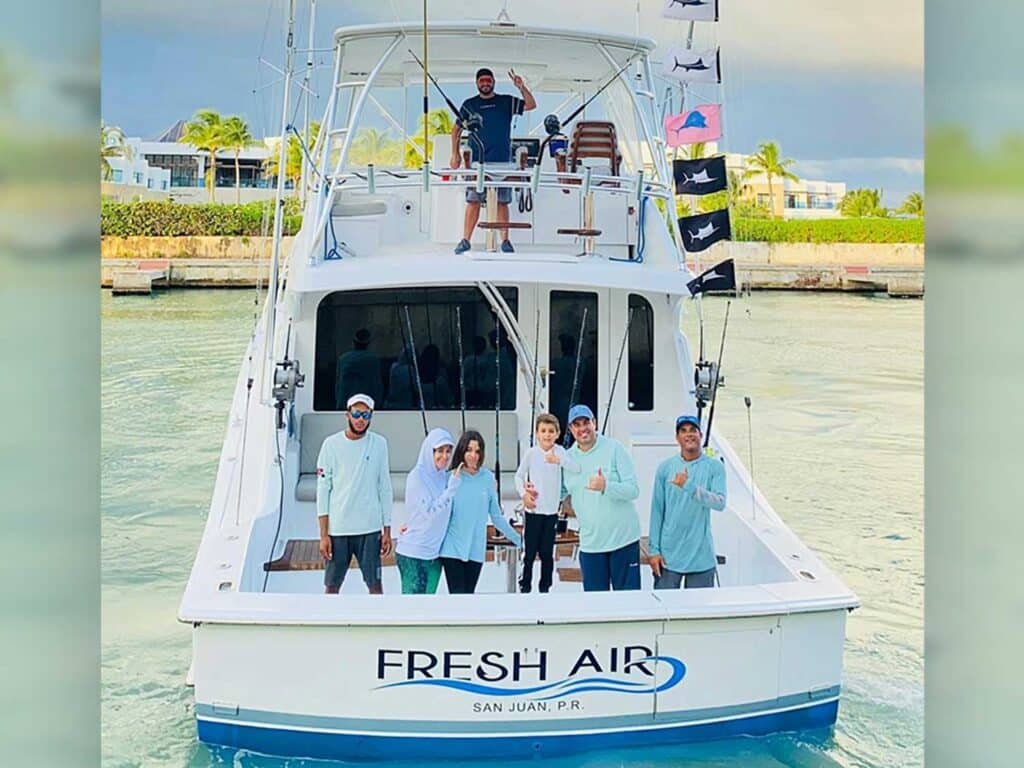Join us for an exclusive adventure to experience the Dominican Republic’s renowned marlin FAD fishery. Fish aboard two of the Caribbean’s most decorated sport-fishing boats—Black Gold with Capt. Keith Bokenhagen and Fresh Air with Capt. Francisco Raffucci (and special guest, Capt. Bryan Ramos)—during peak billfish season. Set against the breathtaking backdrop of Marina Cap Cana, this trip offers world-class fishing, upscale accommodations, and unforgettable camaraderie. Elevate your marlin skills in one of the world’s most stunning destinations while making lasting connections.
Arrive at Punta Cana International Airport (PUJ) in the Dominican Republic for private transport (approximately a 20-minute ride) to Marina Cap Cana to check-in and unwind before dinner.
Our instructors meet every angler at their skill level. New? We’ve got you. Advanced and want to dial in your technique? We’ve got you there, too. Bringing your fishing team? Perfect! Let us help your group get on the same page. Light breakfasts, coffee, lunch, and snacks are served on board.
Once you get dialed in on the most exciting bite in sport fishing, we compete against each other. It’s boat vs. boat to see who racks up the most releases to win the 2025 Cap Cana Shootout. Breakfast, lunch, and snacks are served on board. We’ll go out on the town for dinner on the last night to celebrate.
Departure times might vary for transport back to PUJ to catch your flight home. Breakfast is served at the host apartment.
Situated on the eastern tip of Hispaniola, the Dominican Republic’s FAD season is in full swing by October—and we’ll be there the week leading up to the full moon. These select dates were handpicked by our expert captains, ensuring the best fishing window. Both boats are among the Caribbean’s top-performing, and are equipped with Omni sonar for unparalleled fish-finding precision.
Stay fueled for battle with coffee, breakfast items, lunch, and snacks served onboard. Whether you’re new to pitching to billfish or a seasoned angler, our instructors and crews are there to guide, support, and celebrate your success.
Give your dead-baiting game a serious upgrade and experience the Dominican Republic’s legendary blue marlin fishery—where multiple shots at hungry blues and even a grand slam are real possibilities. While peak billfish season runs June through August, blue marlin numbers rise in September and stay strong through January, making this an unbeatable time to fish these waters.
Only eight spots available!
Read More About Fishing in the Dominican Republic:


Black Gold
Capt. Keith Bokenhagen is known as the grandfather of Dominican FAD fishing. Serious, hardcore, and driven, he wants to be the high-hook boat at the end of each day. This 65-foot American Custom Yacht is outfitted with the very best in marine technology and trolls like a dream. Also big-tournament winners, this crew fishes hard, as if it’s tournament day every day, but still manages to keep the vibe upbeat and positive.
Fresh Air
Hailing from Puerto Rico, Fresh Air is a 54-foot Hatteras with a reputation for raising fish and getting bites. Captained by Francisco Raffucci, she’s dominated the Caribbean billfish scene lately. This sharp, focused, and fun crew knows how to work the sonar and pitch-bait blues with precision, keeping anglers hooked up and on the bite.
Your homes for the week are spacious 3-bedroom apartments at Marina Cap Cana’s Aquamarina residences. Each unit features a full kitchen stocked with coffee and bottled water, and includes washers and dryers for your convenience. Bi-weekly housekeeping ensures your space stays fresh throughout your stay. Each apartment accommodates two to three guests comfortably.
A golf cart is provided for each apartment during your downtime.
Evenings are a culinary experience, with our most-requested private chef, Christian Rojas, preparing gourmet dinners at the staff’s apartment for the first four nights. On the final evening, we’ll head out for a celebratory dinner to toast our fishing successes. Breakfast will be served before you depart for the airport.
This expedition is priced as a fully curated package, with airport transfers, accommodations, four full days of fishing, standard boat tips, standard chef tips, departure-day breakfast, and some select wine/cocktails.
Airfare to and from Punta Cana International Airport (PUJ) is not included.
| Cancellation Notice | Refund Policy |
|---|---|
| 91+ Days Before Trip | Full Refund |
| 60-90 Days Before Trip | Refund less 50% of the deposit per person |
| 31-59 Days Before Trip | Transferable to a trip in the same calendar year or at the director's approval |
| Less than 30 Days Before Trip | Non-refundable |
Many products featured on this site were editorially chosen. Marlin may receive financial compensation for products purchased through this site.
Copyright © 2025 Marlin. A Bonnier LLC Company. All rights reserved. Reproduction in whole or in part without permission is prohibited.
Sign up for free Marlin Group emails to receive expert big-game content along with key tournament updates and to get advanced notice of new expeditions as they’re introduced.
Subscribe now to get seven keepsake print editions of Marlin per year, along with instant access to a digital archive of past issues, all for only $29 per year.